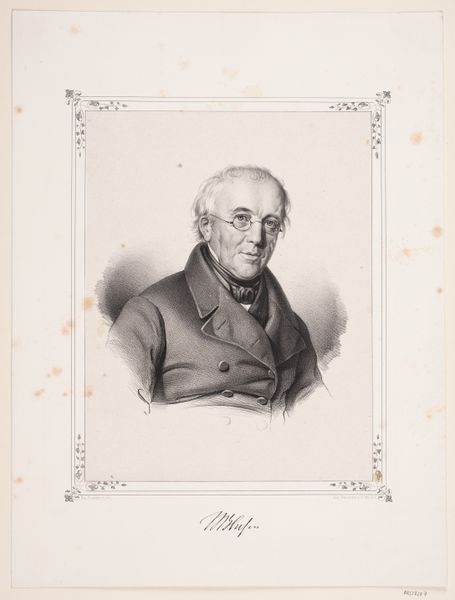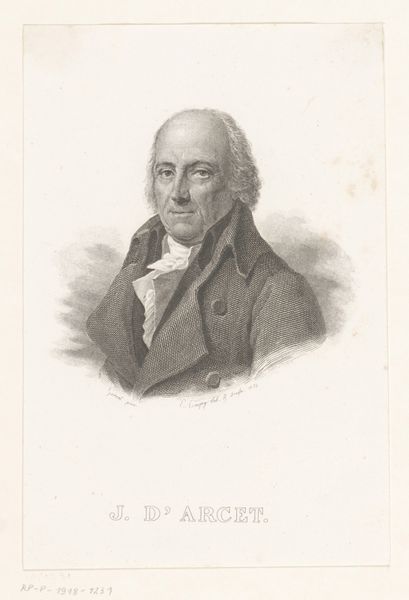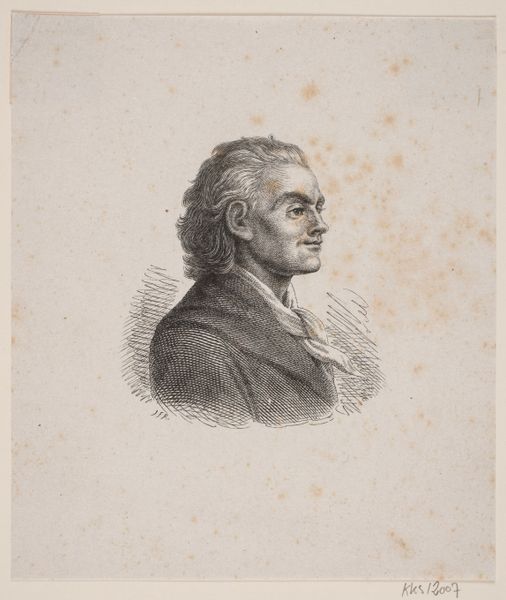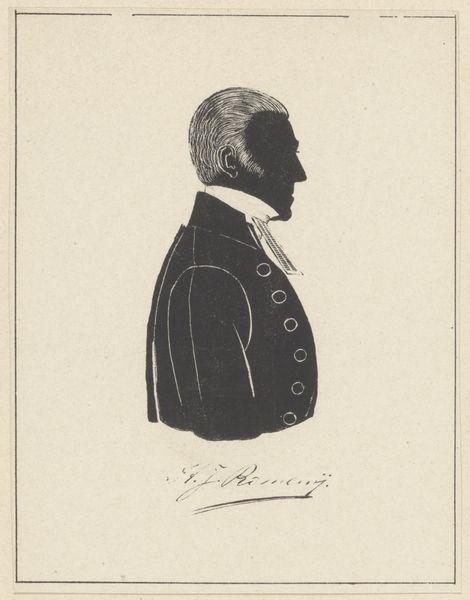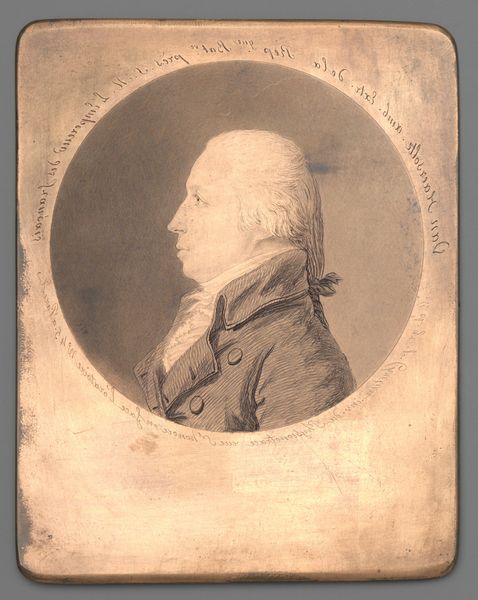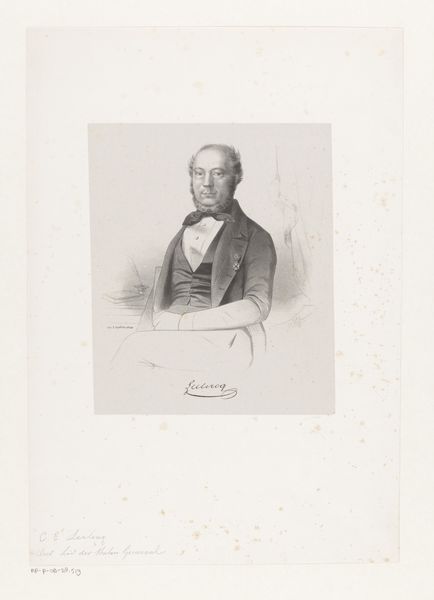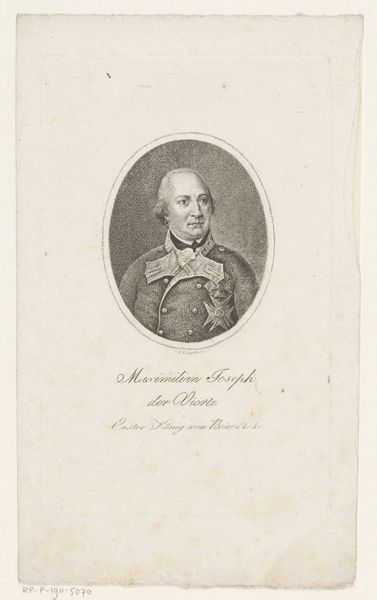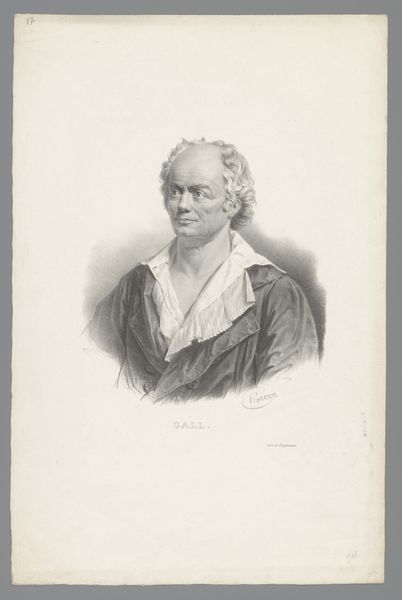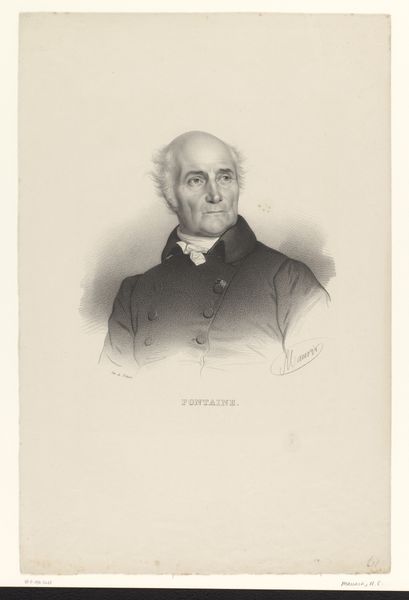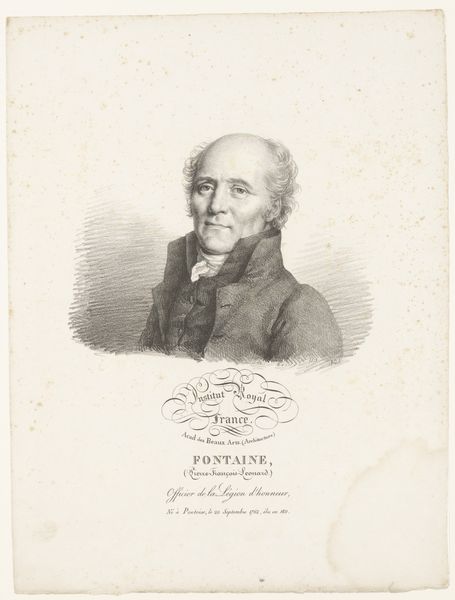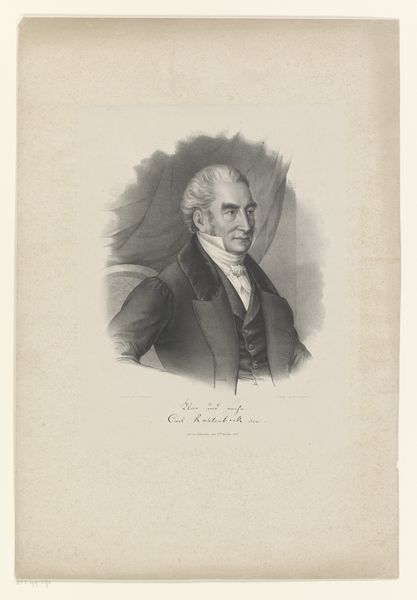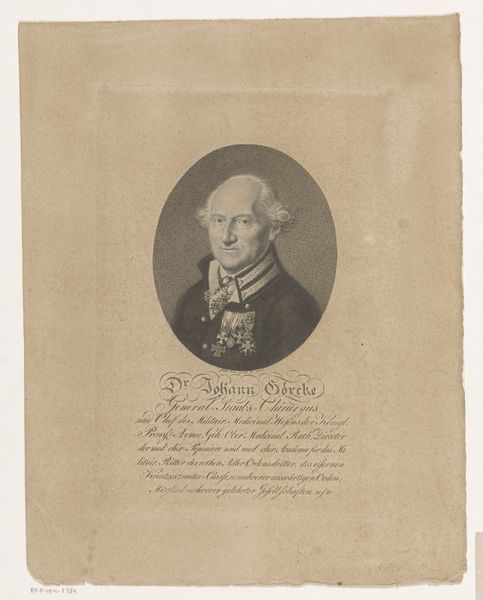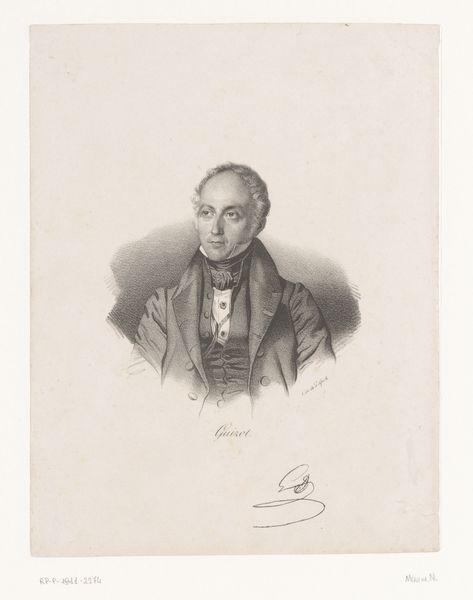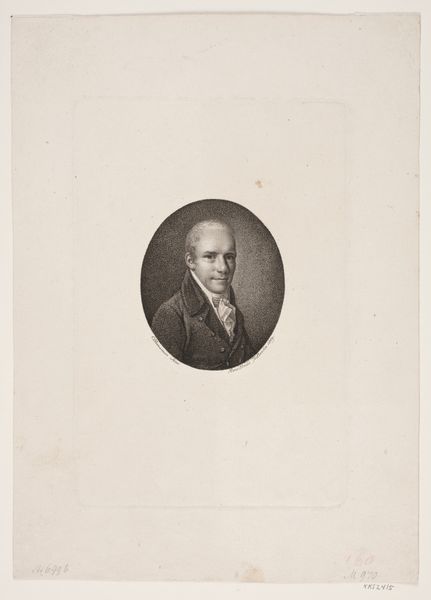
lithograph, print
#
portrait
#
lithograph
# print
#
portrait reference
#
portrait drawing
#
history-painting
#
portrait art
#
realism
Dimensions: 159 mm (height) x 116 mm (width) (bladmaal)
Curator: This is a lithograph dating from 1853, simply titled "W. Huth" and currently held at the SMK, the National Gallery of Denmark. Editor: My first impression is one of quiet dignity, a somber reserve communicated by the subject's profile and the muted tones. The printmaking itself has an elegance to it. Curator: Elegance is right. The printmaking technique allowed for relatively inexpensive reproduction, meaning portraits like these could circulate wider, creating a visual record of individuals within the societal landscape. It creates a different kind of public memory, not reserved just for monarchs and nobles anymore. Editor: Indeed. Observe the subject’s clothing, the high collar and formal jacket. It denotes status, but more than that, I see a deliberate invocation of tradition. It reminds us that even in the 19th century, the past holds symbolic weight, influencing how we present ourselves to the world. The frill adds just a touch of softness and refinement. Curator: And considering the period, we can think about the burgeoning middle classes desiring to project their social mobility through these affordable artworks, signaling respectability and perhaps aspirations to greater influence. Portraiture in lithograph democratized access to imagery, a far cry from oil on canvas reserved only for the wealthy. Editor: Exactly, yet the careful shading around the face still aims for a degree of timelessness. This man isn’t merely representing himself. He's consciously positioning himself within a visual lineage of respected figures. It is worth looking closer at the subtle textures, the way the lithographer uses strokes to give the impression of depth and bone structure beneath the skin. It hints at stories untold. Curator: It also serves as a visual record of how artistic and reproductive technologies shape social perception and even collective aspirations during industrial modernity. Editor: Overall, this print serves not only as a rendering of a man’s likeness, but also reveals something far richer concerning his place in society. Curator: Yes, a visual testament to individual identity molded and projected within a specific social fabric. Editor: I will consider it differently from now on.
Comments
No comments
Be the first to comment and join the conversation on the ultimate creative platform.
